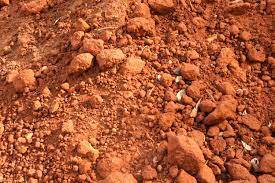India is a country of diverse landscapes and soils, with over 120 soil types identified across its varied regions. One of the most prominent soil types found in India is red soil. It is also known as red laterite soil. Red soil covers about 10% of the total land area of India, mostly in the Deccan Plateau, the Eastern Ghats, and parts of Central India.

Red soil is a type of lateritic soil, which means it is formed by the weathering of basaltic rocks and other igneous rocks that are rich in iron and aluminum. As a result, red soil has a reddish-brown color due to the presence of iron oxide or rust. Red soil is also relatively low in nitrogen, phosphorus, and organic matter, but high in potassium and other minerals.
Despite its limitations, it plays a vital role in agriculture and ecosystem services in India. Here are some reasons why red soil is important:
- Crop cultivation: Red soil is suitable for a variety of crops such as cotton, groundnut, millets, sorghum, tobacco, and vegetables. Red soil has good drainage and aeration properties, which help in root growth and water regulation. However, red soil is prone to erosion and drought, and requires proper soil conservation measures and irrigation practices.
- Forest cover: Red soil is often associated with dry deciduous forests and scrublands, which are important habitats for biodiversity and ecological balance. Red soil is also used for afforestation and soil conservation programs, as it can support the growth of many types of trees and shrubs.
- Water recharge: Red soil has the capacity to store water and recharge groundwater, which is crucial for water security and resilience in many regions. Red soil also helps to prevent soil erosion and nutrient loss, and enhances soil health and productivity over time.
- Minerals and mining: Red soil is a source of iron, aluminum, manganese, and other minerals that are used in various industries such as construction, metallurgy, and ceramics. Red soil deposits are also associated with bauxite, a major source of aluminum, which is found in the Eastern Ghats and parts of Maharashtra, Odisha, and Andhra Pradesh.
Despite its importance, red soil is facing various threats such as urbanization, mining, deforestation, and climate change. Therefore, there is a need for sustainable land use practices and policies that take into account the ecological, social, and economic values of red soil and its associated ecosystems.
In conclusion, red soil is an integral part of India’s natural resources and heritage, and its conservation and management should be a priority for sustainable development. By recognizing the benefits and challenges of red soil, we can work towards a better future for all.
Important Links